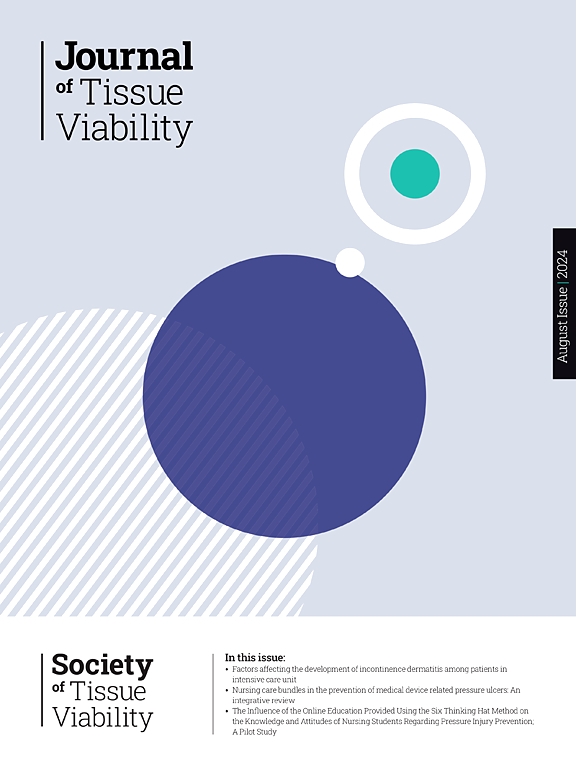Concordance treatment continuum: A proposed clinical outcome to boost concordance with compression therapy
IF 2.4
3区 医学
Q2 DERMATOLOGY
引用次数: 0
Abstract
Research by MacGregor (2013)and shows that 1–3 % of the population experience chronic venous insufficiency (CVI). Among these individuals, 60–80 % develop venous leg ulcers (VLU), according to Nelson and Adderley (2016). However, patient adherence to compression therapy (CT)—the gold standard treatment for VLUs—remains low at 39.9 %, even for those whose ulcers have healed. This lack of concordance heightens the risk of ulcer recurrence (Erickson et al., 1995; Finlayson et al., 2014; Kapp et al., 2013), presenting a significant and costly challenge for healthcare systems (Smith & McGuiness, 2010). Compression therapy works by enhancing venous return and reducing both venous pressure and stasis.
Two Delphi studies conducted revealed a combined 105 overall factors. Whilst clinicians and patients identified different factors that influence long term concordance, there was consensus around factors that contribute to comfort, motivation, access to health care, and clinician attributes. Further research is needed to combine these elements into a concise clinical guideline, a concordance treatment continuum, to assist both the clinician and patient to achieve long term concordance with CT, to improve clinical outcomes of VLU reoccurrence.
一致性治疗的连续性:一个建议的临床结果,以促进一致性与压迫治疗
MacGregor(2013)的研究表明,1 - 3%的人口患有慢性静脉功能不全(CVI)。根据Nelson和Adderley(2016)的数据,在这些人中,60 - 80%的人患有静脉性腿部溃疡(VLU)。然而,患者对压迫疗法(CT)的坚持度仍然很低,只有39.9%,即使对那些溃疡已经愈合的患者也是如此。这种不一致性增加了溃疡复发的风险(Erickson et al., 1995;Finlayson et al., 2014;Kapp等人,2013),对医疗保健系统提出了重大而昂贵的挑战(Smith &;麦吉尼斯,2010)。压迫疗法的作用是增强静脉回流,减少静脉压力和瘀血。两项德尔菲研究共揭示了105个总体因素。虽然临床医生和患者确定了影响长期一致性的不同因素,但在舒适度、动机、获得医疗保健和临床医生属性方面的因素是一致的。需要进一步的研究将这些要素结合成一个简明的临床指南,一个一致性的治疗连续体,以帮助临床医生和患者实现与CT的长期一致性,以改善VLU复发的临床结果。
本文章由计算机程序翻译,如有差异,请以英文原文为准。
求助全文
约1分钟内获得全文
求助全文
来源期刊

Journal of tissue viability
DERMATOLOGY-NURSING
CiteScore
3.80
自引率
16.00%
发文量
110
审稿时长
>12 weeks
期刊介绍:
The Journal of Tissue Viability is the official publication of the Tissue Viability Society and is a quarterly journal concerned with all aspects of the occurrence and treatment of wounds, ulcers and pressure sores including patient care, pain, nutrition, wound healing, research, prevention, mobility, social problems and management.
The Journal particularly encourages papers covering skin and skin wounds but will consider articles that discuss injury in any tissue. Articles that stress the multi-professional nature of tissue viability are especially welcome. We seek to encourage new authors as well as well-established contributors to the field - one aim of the journal is to enable all participants in tissue viability to share information with colleagues.
 求助内容:
求助内容: 应助结果提醒方式:
应助结果提醒方式:


